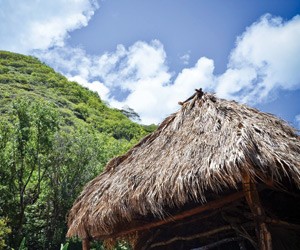An ambitious project is putting a twist on how private development is shaping Maui, but instead of transforming the land into a resort paradise, it's morphing it back to its original paradise.
Thought to once be the second-most-populated valley on the island, supporting more than 950 taro patches before its water was diverted to irrigate sugar cane plantations in the mid-1800s, West Maui's Waihee Valley is time-traveling back to when native Hawaiians plied their traditional lands.
"The big picture is that the front half of the valley—about 25 acres—was purchased by a private individual, and he's turning it into a conservation project to restore the valley back to its glory," says Jamie DeBrunner, sales manager for DeSilva Meeting Consultants, a DMC that organizes group tours to the new attraction. "It's such a pono thing—the right thing to do—to honor our host culture and have a place where the school kids can go and see how their ancestors lived in yesteryear, and for visitors to realize that Hawaii is not Disneyland. This is real—Hawaii is much more than beautiful beaches and umbrellas in their tropical drinks."
Meeting groups can be picked up in a minibus for the drive to the valley—about 30 minutes from Wailea, 45 minutes from Kaanapali and an hour from Kapalua—followed by a guided and narrated hike along a river until the re-created village appears amidst the lush vegetation.
The village can currently handle about 50 group participants at a time via two vans and rotating in about 15 to 20 people per hour. During the roughly three-hour program, guests will see kappa (clothing) being made, learn how to build a hale (traditional house) and partake in a Hawaiian cooking demonstration.
DeBrunner says groups can also turn the outing into a corporate social responsibility program by helping remove invasive plants and tend to the taro patches.




